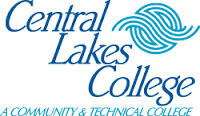What do they do?
Perform tasks involving physical labor at construction sites. May operate hand and power tools of all types: air hammers, earth tampers, cement mixers, small mechanical hoists, surveying and measuring equipment, and a variety of other equipment and instruments. May clean and prepare sites, dig trenches, set braces to support the sides of excavations, erect scaffolding, and clean up rubble, debris, and other waste materials. May assist other craft workers.
Also known as:
Bituminous Asphalt Technician, Construction Laborer, Construction Worker, Drop Crew Laborer, Equipment Operator (EO), Form Setter, Post Framer, Scaffolding Operator, Site Work Laborer, Toolman
-
2.3%
Change
Ranks #47 in job growth rate3,940Job Openings
Ranks #14 in net job growth
Looking for colleges that offer a specific major? Use the College Match Tool to find your best-matched schools and discover your estimated Net Price!
- High school diploma equivalent (40%)
- Less than high school diploma (34%)
- Some college, no degree (16%)
- Bachelor's degree (5%)
- Associate's degree (4%)
- Master's degree (1%)
- Doctorate or Professional Degree (<1%)
People in this career often have talent in:
- Manual Dexterity - The ability to quickly move your hand, your hand together with your arm, or your two hands to grasp, manipulate, or assemble objects.
- Static Strength - The ability to exert maximum muscle force to lift, push, pull, or carry objects.
- Multilimb Coordination - The ability to coordinate two or more limbs (for example, two arms, two legs, or one leg and one arm) while sitting, standing, or lying down. It does not involve performing the activities while the whole body is in motion.
- Arm-Hand Steadiness - The ability to keep your hand and arm steady while moving your arm or while holding your arm and hand in one position.
People in this career often do these activities:
- Operate heavy-duty construction or installation equipment.
- Install green structural components, equipment or systems.
- Operate pumps or compressors.
- Clean equipment or facilities.
- Maintain construction tools or equipment.
- Signal equipment operators to indicate proper equipment positioning.
- Position structural components.
- Install plumbing or piping.
- Direct vehicle traffic.
- Test air quality at work sites.
- Review blueprints or specifications to determine work requirements.
- Finish concrete surfaces.
- Measure work site dimensions.
- Mark reference points on construction materials.
- Assemble temporary equipment or structures.
- Dismantle equipment or temporary structures.
- Clean work sites.
- Dig holes or trenches.
- Compact materials to create level bases.
- Load or unload materials used in construction or extraction.
- Move construction or extraction materials to locations where they are needed.
- Assist skilled construction or extraction personnel.
- Install insulation in equipment or structures.
- Clean surfaces in preparation for work activities.
- Apply paint to surfaces.
- Apply sealants or other protective coatings.
- Remove worn, damaged or outdated materials from work areas.
- Position construction forms or molds.
- Smooth surfaces with abrasive materials or tools.
- Protect structures or surfaces near work areas to avoid damage.
- Install masonry materials.
- Mix substances or compounds needed for work activities.
- Pour materials into or on designated areas.
- Spread concrete or other aggregate mixtures.
- Break up rock, asphalt, or concrete.
- Prepare hazardous waste for processing or disposal.
This page includes data from:

 Occupation statistics: USDOL U.S. Bureau of Labor Statistics Occupational Employment Statistics
Occupation statistics: USDOL U.S. Bureau of Labor Statistics Occupational Employment Statistics
 Videos: CareerOneStop, USDOL/ETA and the Minnesota Department of Employment & Economic Development
Videos: CareerOneStop, USDOL/ETA and the Minnesota Department of Employment & Economic Development




